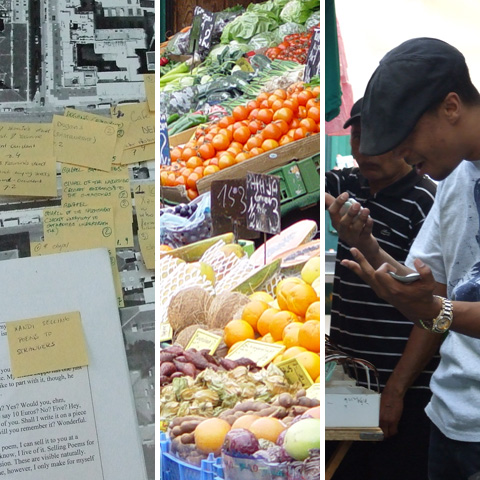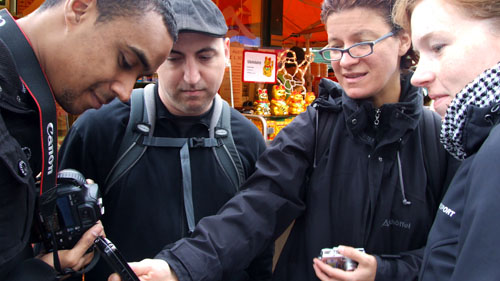City Tales II
Overview
City Tales II is investigating the process to establish a digital layer over the city that contains a story-telling environment integrating participant contributions. The power of a community driven content creation approach has been shown in many other applications available in our information society, such as encyclopaedia, social networking portals and geo-information. Our aim is to focus this power on the creation of content for the mixed reality layer of an urban environment, supported with easy to use yet powerful tools for content creation.
Perceiving stories while on the go creates a rather new context for story-telling. We investigated how the urban tissue influences the story that the user perceives during the physical presence on the given spot, and how the story influences the place. The research work tried to find answers on key issues one has to focus on when planning to establish a narrative story-telling system and formulate design guidelines.
Key Objectives
- Research the structure of narratives fitting to the urban environment by creating sample prototypes and evaluate them.
- Create the technological basis to implement mobile mixed reality story-telling experiences as prototype systems to be used in field trials and workshops. Recommend how tight mixed reality stories should be integrated with the urban environment.
- Define the key design features of a mobile phone based story-telling user experience, with regard to the content mix and amount.
- Investigate if such experiences are easy to transport and relocate.
- Research the community behaviour the individual experience of mobile mixed reality can create communities or if it is a solely private and particularized experience.
Research Outcome
The results of our investigations showed that personal mobility is a key aspect in an urban environment and that is what highly influences the way content should be integrated into the urban tissue. Mixed reality content for story-telling is a valuable feature, but not a continuous must, as the urban environment itself excites us with visual, aural, tactile, etc. influences.
Users report that content integration into the actual urban environment is the only way to create compelling stories! Relocating stories is hardly possible because taking out all urban context completely destroys the experience or creates an enormous overhead on the integration to a new site.
This technology is a community building shared experience, in the sense that users do interact, communicate both during and after from the experience. Adding content to a mixed reality urban story universe is attractive and could greatly be a success factor for both social networking scenarios and commercial implementations.
Outlook
To our experience a mixed reality story-telling system lives from the availability of the basic layer of content and the created stories. While the technology within the project was specifically designed not to include platform, location, system, client, and content specific limitations our findings suggest that the narrative created in such systems is published for the specific location, surroundings, local sights & sounds. This can be seen as a big limitation to story-telling using mixed reality technologies as compared to a book as one must enter the real situation to participate. We do however encounter here an opportunity to provide a new way of communicating stories on global scale using a new metaphor for staging ideas, thoughts and share imagination.





